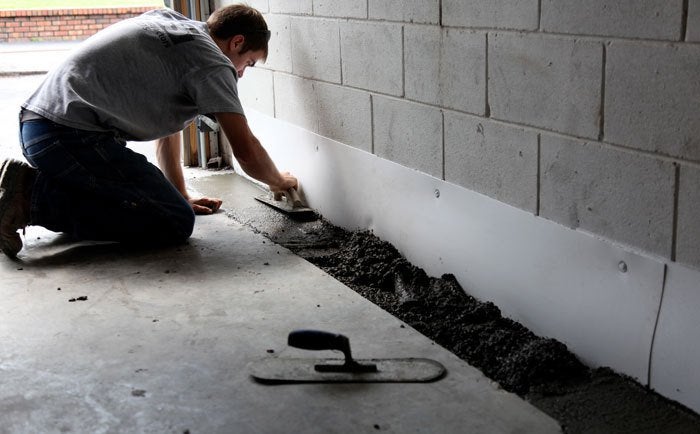Water proofing is a crucial consideration for homeowners and landlords alike, yet it often falls to the wayside until the damage is done. With the danger of water infiltration posing a serious threat to the integrity of properties, understanding the significance of waterproofing becomes paramount. Whether you are looking to protect your home from flooding or simply want to prevent fungus growth in your basement, the best waterproofing solutions can save you major in repairs and ensure a healthy living environment.
However, when it comes to executing waterproofing projects, many people find themselves torn between do-it-yourself methods and hiring expert services. Each option carries its own set of advantages and drawbacks. In this article, we will explore the key factors to consider when choosing between a do-it-yourself method and hiring the help of a professional waterproofing contractor. By outlining essential waterproofing strategies and debunking common fallacies, we aim to provide you with the knowledge necessary to make an wise decision that best suits your needs.
Understanding the Value of Water Resistance
Waterproofing is an integral aspect of upkeeping any house or edifice, as it shields structures from the damaging effects of water infiltration. Moisture can seep into foundations, sides, and roofs, causing significant damage over time. By adopting proficient waterproofing techniques, building owners can prevent issues like mildew formation, structural deterioration, and costly repairs down the line. This preemptive approach not only protects the physical integrity of a building but also enhances its overall worth and lifespan.
Neglecting water resistance can lead to critical consequences. Many residents do not realize the magnitude of damage that moisture can cause until it is too late. Indicators such as musty odors, changed wall colors, or humid lower levels should not be ignored, as they may suggest underlying issues that require urgent attention. The financial impact of neglecting these alerts can be substantial, making it essential for homeowners to understand the importance of timely water resistance measures to avoid greater expenses in the time to come.
Additionally, water resistance is not just about safeguarding structures; it also leads to healthier living environments. High levels of moisture can lead to the growth of fungus, posing grave health risks to occupants. By ensuring that homes are adequately water resistant, not only are construction issues prevented, but the overall environment and well-being within the property improve. As a result, choosing the best water resistance strategies is vital for both security and coziness, emphasizing the importance of this important task.
Do-It-Yourself vs. Professional Waterproofing: Choosing the Best Choice
In terms of waterproofing your house or building, you may discover yourself weighing the choices between DIY methods and contracting professionals. Aluneed basement waterproofing of the key advantages of a DIY approach is saving money. Many homeowners feel assured in tackling waterproofing projects themselves, particularly with the plethora of online resources and products available. If you have some fundamental skills and the right materials, you can handle minor issues, like sealing cracks or putting on waterproof coatings. Nonetheless, it's crucial to keep in mind that not all waterproofing jobs are appropriate for a DIY approach, and errors can lead to significant water damage down the line.
Conversely, professional waterproofing services offer expertise and a guarantee of high-quality work. Experienced contractors have the expertise and unique tools necessary to address challenging waterproofing issues effectively. They can assess your property's unique needs and recommend tailored solutions that might not be apparent to an untrained eye. Additionally, professional waterproofing often comes with guarantees, which provide comfort knowing that any future issues related to the work done will be covered.
Ultimately, the decision between DIY and professional waterproofing depends on the seriousness of the problem and your level of expertise. For small, manageable tasks, a DIY approach may suffice. On the contrary, for larger projects or serious issues, investing in professional services can save you resources, effort, and potentially significant repair costs in the future. Evaluating your capabilities and the specific needs of your property will guide you toward the most effective choice for efficient waterproofing.
Key Waterproofing Methods for Property Owners
Homeowners can utilize several efficient waterproofing methods to safeguard their houses from moisture damage. One of the most vital measures is ensuring adequate drainage around the foundation. This involves sloping the landscape away from the home to channel rain away from the home, as well as installing gutters and downspouts to divert roof runoff. Regularly cleaning these systems helps prevent blockages that could lead to water pooling near the base, considerably lowering the risk of leaks and construction damage.
Another essential technique is putting on waterproof coatings to both indoor and exterior surfaces. Using high-quality sealants on basement walls and floors helps create a shield against moisture infiltration. For outdoor walls, select appropriate paint or membrane systems designed for waterproofing, and make sure to cover all vulnerable areas carefully. Additionally, homeowners should always fix any cracks and gaps in their walls and foundations to stop water seepage before applying these coatings.
Lastly, creating a humidity-controlled environment indoors is critical for avoiding mold and mildew growth. Property owners should consider investing in dehumidifiers, especially in basements and crawl spaces where moisture tends to build up. Regularly inspecting and sealing areas prone to leaks, such as around windows and doors, also plays a key role in keeping indoor spaces water-free. By combining these techniques, homeowners can defend their properties and enhance their durability against moisture damage.

